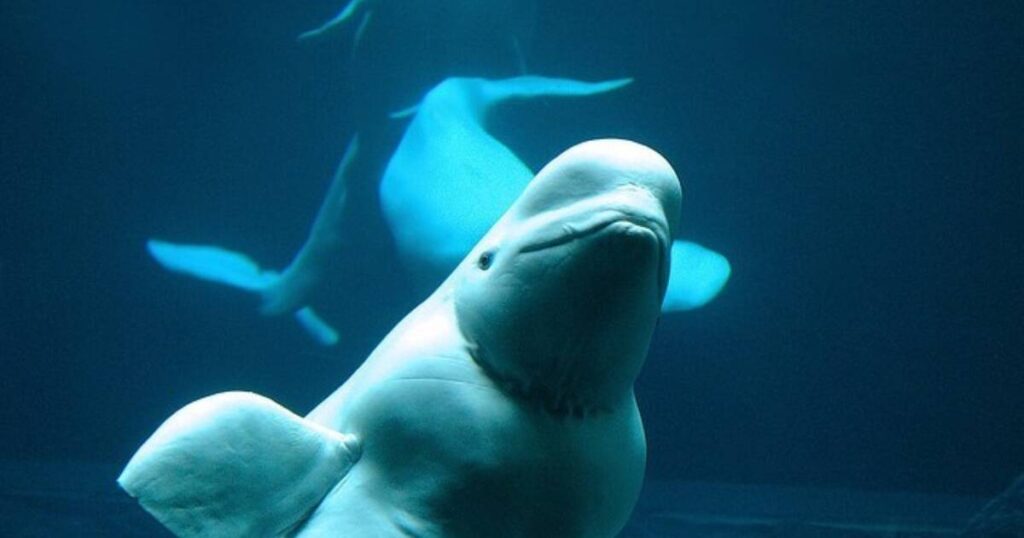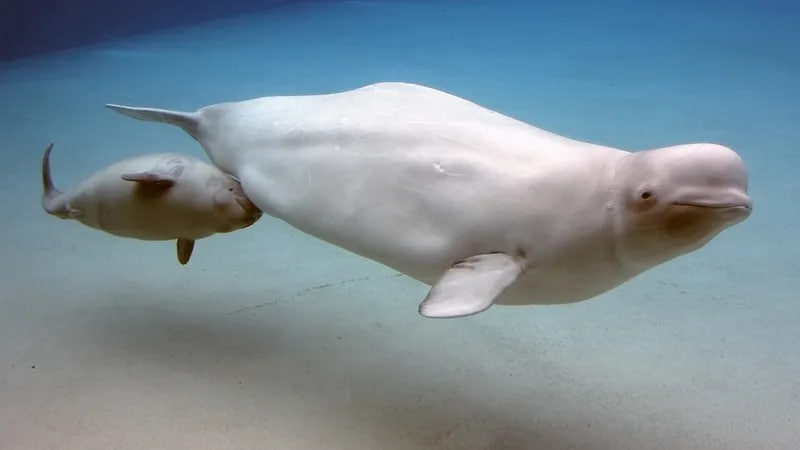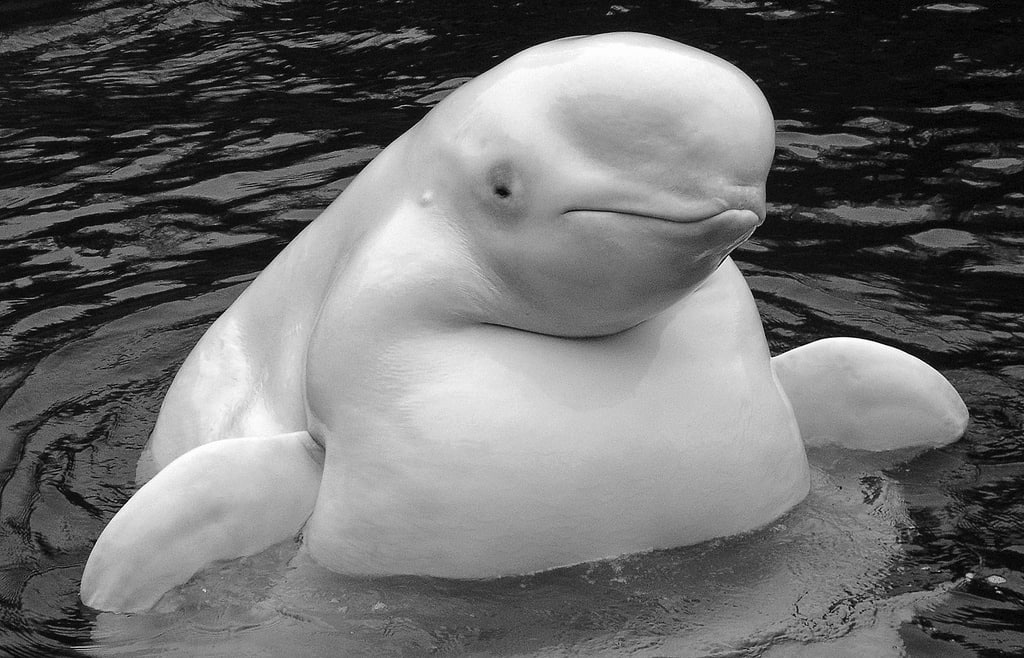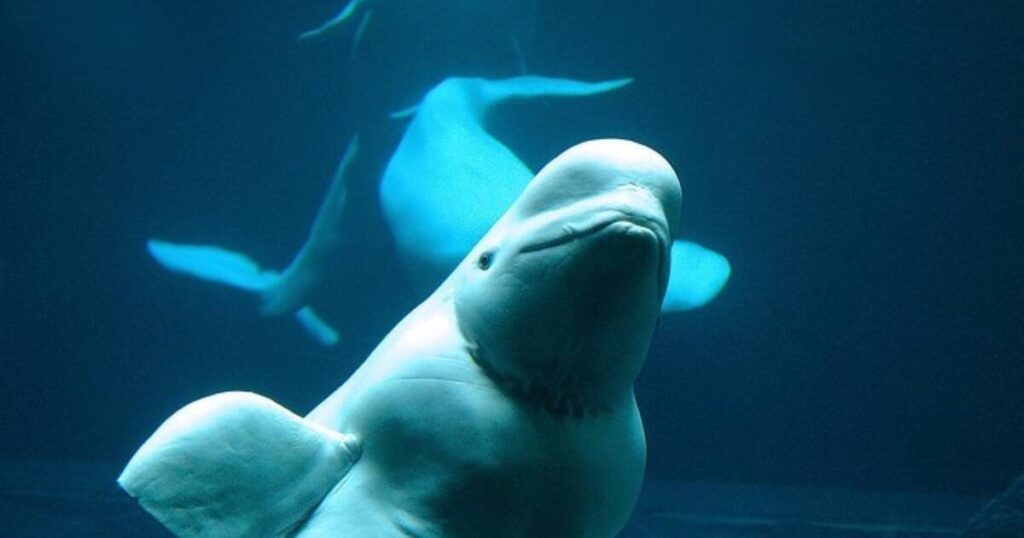Beluga Lifespan whales are famous by their pale white whale appearance and a variety of sounds which earned them the name as the “canary of the sea.” They’re also extremely social animals and form groups that hunt, migrate as well as interact with one another.
Beluga whales can be found worldwide across the Arctic as well as in sub arctic waters and-Arctic waterways. Within the United States, they are located within the State of Alaska. They live in the coast and along inlets, and are able to move between salt and freshwater. A fat-rich layer referred to as blubber and the thick skin help them survive in frigid waters that are found in subarctic and arctic environments. Belugas do not have an upper dorsal fin to ensure they are able to swim in the ice.
Beluga whales are at risk of various threats and stresses such as destruction of habitats, harassment interaction with recreational and commercial fishing drilling for oil and gas and disease, predation from killer whales, as well as various other human-related disturbances.

Sport and commercial hunting has affected the beluga whale population. They are no longer allowed however, some Alaskans are still hunting beluga whales to ensure subsistence.
Hunting marine mammals to feed as well as clothing and other handicrafts is essential to ensure the existence for Native communities. In 2005 an agreement on harvest management was approved in order to control harvests. Cook Inlet beluga harvest. Alaska Native hunters last harvested Cook Inlet beluga whales in 2005.
Additionally to that, Cook Inlet belugas are also listed as endangered. Cook Inlet distinct population segment is classified as endangered under the Endangered species Act. Cook Inlet belugas belong to NOAA Fisheries’ Species that are in the Spotlight–an initiative which includes species that are considered to be most vulnerable to extinction, and they are the first priority in the recovery of their species.
Population Status
Within the United States, NOAA Fisheries discovered five different beluga whales that are found in Alaskan waters. The five beluga whale stocks whales include:
- Beaufort Sea
- Bristol Bay
- Cook Inlet
- Eastern Bering Sea
- Eastern Chukchi Sea
The distribution for summer of the beluga whale stock throughout the Bering, Chukchi, and Beaufort oceans, with five stock located in Alaska.
Each one is distinctive that is distinct from the others physically and genetically through the routes of migration and habitats they prefer. NOAA Fisheries’ stock assessments estimate the size of marine mammal stock in U.S. waters.
Belugas around the world could be around the hundreds of thousands However, some populations are very small, just around the lower hundreds. The threatened Cook Inlet beluga whale population decreased by more than 80 percent between 1979-2018 which was from approximately 1,300 whales and an estimate of 279 whales.

The dramatic decline and the terrible situation that the Cook Inlet beluga whale population has made it an urgent important issue to NOAA Fisheries and its partners to encourage recovery in order to avoid the extinction. The most current estimation of the population of 2022’s surveys show a total of 331 whales. This indicates that the number of beluga whales live there is growing and stabilizing. Monitoring for the next few years will confirm whether this is indeed the case.
The Sakhalin Bay-Nikolaya Bai-Amur river beluga whales an eastern portion of the North Pacific off the coast of Russia estimates it to be approximately 396 whales. Responding to an appeal, NOAA Fisheries conducted a check on the condition of the stocks and classified the small whales in it as exhausted under the MMPA in the year 2016.
Appearance
Beluga whales have dark grey skin when they are calves. The skin of the whales lightens with age and turns translucent as they attain the point of physical maturation. There is no prominent beak or rostrum and their top head has an oval and flexible “melon” that focuses and regulates vocalizations. It includes the echolocation “clicks.” They are teethed whales, with the size of 18-20 teeth within the lower and upper jawbones. They have an overall total of 36 to 40 teeth.
The name of the belugas continued the genus delphinapterus leucas is a reference to “dolphin without a fin.” Instead of having a dorsal fin, the belugas possess an incredibly strong dorsal ridge that lets them swim effortlessly underneath the ice floes (sheets of floating frozen ice). As opposed to dolphins or whales the neck vertebrae of belugas aren’t fused. This means they can move their heads side to the side.
Beluga whales are covered in a the thickest blue blubber layer that can make up as much as 40 percent of their mass. Bluebber is a way to keep warm in the frigid Arctic waters and helps to store energy. Certain populations of belugas shed their skin’s outer layer in the summertime during an annual Molt. They rub against gravels in shallow cold arctic waters to remove the layers of old, pale skin.

Behavior and Diet
Belugas are animals that socialize. They go back to their breeding zones each year to eat and to calve. The size of groups can range from only two or more, toothed whales each, or more than a hundred whales. The individuals are able to move around within these communities, but not like certain killer who are believed to have strong connections with their mothers-led pods.
Belugas are often referred to as “canaries of the sea” due to their numerous sound effects, such as whistles, sounds like squeals and moos, clicks and clicks. They are dependent on hearing ability and the ability to echolocate by using sound to locate and hunt prey. Belugas also have a sharp sense of vision both in and out of the water.
Beluga whales eat a diverse diet that includes octopus crabs, squid and shrimps, clams, snails and sandworms. They also eat various kinds of fish species, such as cod, salmon, eulachon and herring. They also eat smelt, herring and flatfish.
Where They Live

Beluga whales are found throughout Beluga whales are found in Arctic Ocean and its nearby oceans of the Northern Hemisphere. They’re common in many areas of Alaska and also Russia, Canada, and Greenland.
They are typically found in shallow waters of the coast in summertime typically in shallow waters. In other seasons it is possible to find them in deeper water and diving up to a depth of 1,000 meters in a span of as long as 25 minutes.
They are found swimming among floating icebergs in the Arctic as well as subarctic waters, and temperatures could drop as low as 32 degrees. They also inhabit big river deltas and estuaries for feeding on the fish run which is why they are well-adapted to cold ocean environments and freshwater habitats that are relatively warmer.
Lifespan & Reproduction
As with tree rings which could be used to alter the age of the tree and beluga teeth develop the designation of a “growth layer group” (GLG) with each year they grow older. The oldest known beluga has been found to have 80 GLGs. this could be an overestimation of the true age of the beluga whale behavior, because of the wear and tear of the teeth. The longest-lived cook inlet population beluga whale had 49 GLGs.
Beluga whales have been believed to get married in the late in the winter months and early in the spring. According to the species the possibility of this happening could be when they are migrating or on their winter habitat. The age at which females can become sexually mature is when they’re between 6 and 14 years old.
Likewise, males are slightly older. The duration of pregnancy is about 15 months while calves are nursed for at least two years. Females are able to give birth between two to three years. The rates of pregnancy showed signs of decreasing after 45 years in northwest Alaska.
The most striking thing is that the most senior female of the northwest Alaska study, aged 70, had an unborn fetus. The beluga whale with the oldest age found in cook inlet population was 47 years old, and was believed to be having a baby recently.
Belugas usually give birth in the summer months in regions where temperatures are warm because newborn calves do not have an encasement of blubber that is thick enough that protects them from cold waters. The calves are able to benefit from warmer waters that are found in shallow flats of tidal and estuaries.
Threats
Beluga whales are prone to many hazards and stresses, which include pollution (e.g. chemical waste,) and transportation, exploration of energy and development commercial fishing, severe storms, strandings predators from killer as well as Polar bears, noise from the ocean as well as subsistence harvesting. various other human-induced disturbances. In addition, the Cook Inlet population has additional dangers due to it’s proximity to the populous area in Alaska (Anchorage).
Habitat Degradation
Beluga whales can be vulnerable to destruction and degrading of their habitat. They are susceptible to being hampered by obstacles that restrict access to vital areas for migration, breeding, food areas for calving and breeding as well as activities that degrade their habitats or damage them.
The barriers that can hinder beluga movement could include offshore development and shoreline (oil and gas exploration, ports and harbors, dredging, pile-drive) as well as increased boat traffic. Releases of contaminants can also affect critical habitat elsewhere.
Contaminants
Ocean waters are contaminated with contaminants due to various sources, including nonpoint source as well as point source like the development of oil and gas and wastewater discharges, as well as urban runoff and various different industrial activities.
When they are in the natural environment, contaminants move upwards in the food chain, and then accumulate in the predators at the top in the food chain, such like beluga whales. Since contaminants can last for a long time and have blubber storage the belugas build up these contaminants within their bodies, which can threaten their reproductive systems and immunity.
Prey Limitations
The effects of overfishing, habitat change as well as the consequences of climate change may affect the amount of food readily available for beluga whales. If they don’t have enough prey available, belugas could experience reduced reproductive rate and higher deaths rates. Knowing the possibility of limitation in diet to limit the recovery of beluga populations is particularly important to cook inlet population beluga whales as they are in a region that is populated by humans.

Strandings
Strandings that live occur in marine mammals that become “beached” or stuck in the shallows of the water. The reason for the majority of cases of stranding remains unclear. Belugas can strand while moulting to avoid predators, or to avoid other dangers, like noise or vessel traffic or in the case of illnesses or injuries.
As opposed to dolphins or whales the healthy ones that live-strand await the peak tide to return and then swim back to deeper waters. However, some adult belugas die in live Strandings. Belugas who have weak immune systems could not withstand an active stranding during an entire tide cycle.
During my recent visit to the Arctic regions, I had the opportunity to observe beluga whales in their natural habitat. This experience provided me with a deeper understanding and a unique perspective on these magnificent creatures. As I watched them gracefully navigate the icy waters, their social nature became evident. Groups of belugas were communicating with each other through a symphony of sounds, reinforcing their nickname as the “canary of the sea.”
One particularly memorable moment was witnessing a mother beluga guiding her calf through the waters. This interaction highlighted the strong familial bonds that these animals share, a trait that’s often overshadowed by their physical characteristics.
During my expedition to the Arctic, I was fortunate to observe belugas in various stages of their life cycle. One morning, as the sun barely peeked over the horizon, I witnessed a young beluga calf playfully nudging its mother, a sight that beautifully illustrated the nurturing aspect of these creatures. This interaction offered a poignant reminder of the fragility and resilience of life in these harsh climates.
Ocean Noise
Noise pollution in the water disrupts regular behavior of the beluga whale who rely on sound to communicate as well as echolocate. If the noise is too loud, it may cause permanent or short-term hearing loss. It is a particular issue to people living in the Cook Inlet population, which lives in an area of large vessels as well as oil and gas exploration and development, dredging and pile driving airports, military activities, military installations and other noise-making (human-caused) actions.
Working alongside marine biologists, I gained firsthand knowledge about the challenges these animals face. One biologist, Dr. Smith, who has been studying beluga whales for over a decade, shared insights on the impact of climate change on their migration patterns. She explained how the melting ice caps are not just altering their habitat but also affecting their prey availability, which in turn impacts their reproduction and overall health.
Climate Change
The consequences of changes in the climate on whales remain not known, however they are considered to be among the biggest threats that face high latitude regions, where large numbers of gray whales graze. Particularly, the time and spread of the sea ice changes dramatically as a result of changing sea surface conditions. The resulting shifts in the distribution of prey could result in modifications in hunting behavior as well as nutritional stress and reduced reproduction in beluga whales. In addition, the changing temperature of water and flow could affect the time of signals from environmental sources crucial for migration and navigation.
In a series of interviews with marine biologists specializing in Arctic marine life, I gained invaluable insights. Dr. Emily Hansen, a leading authority on beluga behavior, shared her latest research findings on beluga communication patterns. She explained how their sophisticated ‘language’ is not just a means of social interaction but a vital tool for survival in the intricate Arctic ecosystem.
Reflecting on Conservation Efforts
During my time in Alaska, I had the chance to interact with local communities involved in beluga whales conservation. Their dedication to preserving the beluga’s habitat was inspiring. One community leader, John, described their efforts to balance traditional hunting practices with conservation needs. He emphasized the importance of sustainable practices to ensure the survival of both the beluga population and their cultural heritage.
Conclusion: A Personal Appeal for Beluga Conservation
My exploration into the realm of Delphinapterus leucas, commonly known as beluga whales, has been a transformative journey. Delving beyond mere texts, I’ve been captivated by the firsthand experience of their grace and the challenges they face. These creatures, often referred to as ‘sea canaries’ due to their distinctive vocalizations, are more than just a species; they represent a crucial part of our marine ecosystem.
Understanding their plight under the Endangered Species Act, as enforced by the National Marine Fisheries Service, underscores the urgency of their conservation. This act not only recognizes belugas as a vulnerable species but also emphasizes the necessity of preserving their designated critical habitat. As I pen the final lines of this article, it’s my fervent hope to awaken a collective consciousness among my readers.
We must acknowledge the imperative role we play in safeguarding these toothed whales and their environment. Our actions, or the lack thereof, will inevitably shape the destiny of the Delphinapterus leucas and the diverse marine life they coexist with. Let’s commit to responsible stewardship, ensuring that the future of these magnificent beings is as bright and promising as the waters they gracefully navigate.
FAQ
What is the oldest beluga whales?
Belugas that are the oldest have 80 GLDs. The number of GLDs could be deceiving because of wear on the teeth of other whales too. The first toothed whales that Cook saw weighted 49 GLG. In the past, beluga whales live were have been mated during spring or late winter.
How long do belugas live in captivity?
The results of studies involving natural or zoological species show that average lives of beluga toothed whales last between 30 and 35 years.
What is the lifespan of a beluga?
Are beluga whales able to live for longer? Wild, belugas are able to live between 40 to 45 years typically. Recent studies indicate that Beluga may live up to 70 years.
How long is the average beluga?
Belugas can be found in the range of five feet in length and weigh as much as 90 to 130 pounds. Adults can reach 13 feet in length. Females may be taller than men and will rarely exceed 10 feet in the height. The weight range for adults ranges from 1000-3300 pounds.

